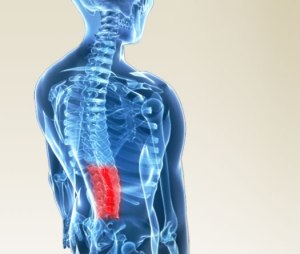The EMG Study
As featured on Spine-Health.com. Dr. Patel is a physiatrist and treats patients suffering from neck and back pain.
Contributed by Nayan Patel, MD

For the spine patient with Failed Back Surgery Syndrome, the electrodiagnostic study helps the physician assess for nerve damage coming from the cervical or lumbar spine, as well as evaluate for other nerve-related problems in an extremity (such as peripheral neuropathy).
Because symptoms from a patient withFailed Back Surgery Syndrome can be complicated, additional electrodiagnostic tests can help the physician with accurate diagnosis of the origin(s) of the patient’s pain.

An electrodiagnostic study, commonly called an EMG, is used to evaluate muscle and nerve function of a person who has extremity or facial pain, numbness and/or weakness. The study can be used to assess for cervical or lumbar radiculopathy (nerve damage from spine disease), any co-existing peripheral neuropathy (nerve damage from diseases like diabetes), myopathy (muscle disease) or focal neuropathy.
The test also helps localize the location of spinal nerve damage as well as distinguish if the damage is new or old, and progressive or stable.
There are two parts to an electrodiagnostic evaluation: nerve conduction study (NCS) and electromyography (EMG).
Nerve Conduction Study (NCS)
The NCS is done with a stimulator that generates a mild shock that travels down the nerve; the signal generated is picked up by an electrode placed at a specific distance. The data obtained give the testing physician information regarding the speed and strength of the nerve signal. The NCS picks up signals from two types of nerves: the sensory nerve, which provides sensation signals from the skin, and the motor nerve, which provides power signals to the muscles.
Electromyography (EMG)
The EMG study is done with a sterile, small gauge amplifier needle inserted into the muscles of an affected extremity. Each muscle is powered by specific sets of spinal nerves: for example, the bicep is powered by the C5 and C6 spinal nerves. If an abnormality is seen in the activity of a muscle or group of muscles, the physician can determine which spinal nerve is likely involved. The study can also help assess the age, extent, and possible progression of damage.
The complete EMG test takes 30 minutes to one hour. Although uncomfortable for some patients, the test is well tolerated and there is no persistent discomfort. The ordering physician may use the study in conjunction with other diagnostic studies, such as an MRI or CT scan, especially if the problem is thought to originate in the spine.
Since a patient who has failed spine surgery syndrome can have complicated symptoms, the evaluating surgeon can have difficulty telling if a person’s ongoing pain is coming from a spinal nerve. The EMG study will help evaluate active versus inactive spinal nerve damage as well as localize the spinal level of nerve damage. It will also help assess for any coexisting peripheral nerve damage.

